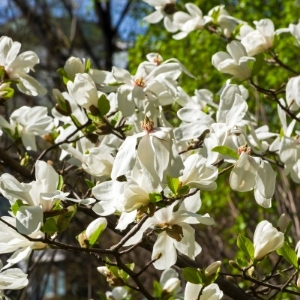Trees FAQs
There’s a tree for every garden, big or small. Smaller, compact trees like the fabulous acers look fantastic with their red, green and pink dissected foliage and grow really well in large containers too. Hedging trees like native hazel, evergreen holly and bay act as excellent privacy screens, windblocks and barriers whereas full sized features like an English oak or flowering cherry are majestic stand alone feature trees that’ll stop guests in their tracks.
How long does an apple tree take to grow?
Dwarf apple trees take one to two years to start producing fruit whereas full size trees can take between five and ten years. Grafted apple trees are restricted by their rootstock, so a tree with a dwarfing rootstock will stop growing once it has reached roughly two metres in height. Full size apple trees can reach ten metres tall at maturity.
How to grow a lemon tree
Grow your own lemon tree in a container in a sheltered spot that sees full sun during the day. A south facing wall is ideal or inside a bright conservatory where the flowers fill the room with heady scent. Avoid growing inside the house where there’s central heating. Choose a cold hardy variety like lemon ‘Eureka’, which tolerates temperatures down to -5?.
Plant your lemon tree in a large container into free-draining compost, feeding your tree once a week with a citrus fertiliser. Water regularly during spring and summer. Prune your lemon tree in spring to remove any dead, dying or brittle branches and suckers using very sharp, clean secateurs.
How to care for an acer
Japanese maples (acers) thrive in containers. They prefer slightly acidic soil that’s really free draining, so use ericaceous compost and plenty of grit in the potting mix. It’s important to choose a container that’s fairly snug around the root ball of your new tree to keep your new tree stable in its pot. The best time of year to plant is during its winter dormancy between October and March. Dark coloured acers like a position in full sun whereas lighter green and yellow leaved varieties like the lovely Acer palmatum ‘Going Green’ prefer a cooler, shadier spot. Water your acers using rainwater to top up the acidity in the soil and give them a feed every spring with an ericaceous liquid fertiliser.


